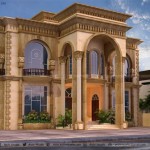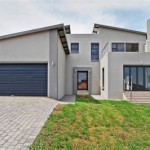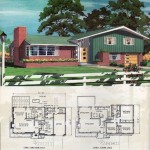Small Racing Pigeon Loft Plans
For enthusiasts with limited space, a small racing pigeon loft can be a practical and rewarding venture. Careful planning and design are crucial to ensure the health, well-being, and optimal performance of the birds. This article will explore various aspects of small racing pigeon loft plans, offering guidance on creating a functional and efficient space for these remarkable athletes.
Space Optimization: The primary consideration for a small loft is maximizing available space. A compact design should not compromise the essential needs of the pigeons. Vertical space can be utilized effectively by incorporating multiple tiers for perches and nesting boxes. Thoughtful placement of these elements can create a comfortable and organized environment, even within a limited footprint.
Loft Location: Choosing the right location is paramount. The loft should ideally be situated in a dry, well-ventilated area with ample sunlight. Protection from prevailing winds and extreme weather conditions is essential. Proximity to trees and other structures should be considered to prevent predator access and ensure the birds' safety during flight training.
Ventilation and Air Quality: Proper ventilation is critical for maintaining a healthy loft environment. Stagnant air can lead to respiratory problems and the buildup of harmful ammonia from droppings. Adequate airflow can be achieved through strategically placed vents, windows, or an aviary-style mesh section. Regular cleaning and proper waste management are also vital for air quality control.
Construction Materials: Durable and weather-resistant materials are essential for loft construction. Common options include wood, metal, and brick. Wood offers good insulation but requires regular maintenance to prevent rot and insect infestation. Metal is more durable but can be prone to temperature fluctuations. Brick provides excellent insulation and longevity. The choice of material will depend on budget, climate, and personal preference.
Perches and Nesting Boxes: Providing comfortable perches and nesting boxes is crucial for the pigeons' well-being. Perches should be of varying sizes to accommodate different birds and allow for natural perching behavior. Nesting boxes should be spacious enough for breeding pairs and provide a secure and private environment for egg-laying and chick rearing. The number of perches and nesting boxes should be proportionate to the loft's size and the number of birds housed.
Feeding and Watering Systems: Efficient feeding and watering systems are essential for maintaining hygiene and minimizing waste. Hopper feeders and automatic watering systems can help keep food and water clean and readily available, reducing the risk of contamination and disease. Placement of these systems should be strategic to prevent overcrowding and ensure all birds have access.
Lighting Considerations: Natural light is beneficial for pigeon health and breeding cycles. The loft design should incorporate windows or skylights to maximize natural light penetration. Artificial lighting can be used to supplement natural light during shorter days or in areas with limited sunlight. Providing a consistent light-dark cycle helps regulate the birds' natural rhythms and promotes overall health.
Security and Predator Protection: Protecting the pigeons from predators is crucial. The loft should be constructed with secure doors and windows. Wire mesh can be used to cover any openings or to create an aviary area for outdoor access. Regular inspections for potential vulnerabilities and prompt repairs are necessary to maintain a secure environment.
Cleaning and Maintenance: Regular cleaning is essential for maintaining a healthy and hygienic loft. Droppings should be removed frequently, and the loft floor should be disinfected regularly. Perches and nesting boxes should be cleaned and sanitized periodically. Routine maintenance of the loft structure, including repairs and repainting, will prolong its lifespan and ensure the well-being of the pigeons.
Plan Adaptation and Flexibility: Starting with a small loft allows for adaptability as the pigeon racing hobby evolves. Modular designs or expandable loft structures can accommodate a growing flock or changes in racing needs. Planning for potential expansion during the initial design phase can save time and resources in the long run.
Regulations and Local Ordinances: Before building a pigeon loft, it is essential to research and comply with local regulations and ordinances. Some areas may have restrictions on loft size, location, or the number of birds allowed. Obtaining necessary permits and approvals before construction can prevent potential legal issues.
Building a small racing pigeon loft can be a fulfilling endeavor. Careful planning and attention to detail are crucial for creating a functional and efficient space that promotes the health, well-being, and performance of these athletic birds. By incorporating these considerations into the design and construction process, enthusiasts can establish a thriving loft environment even within a limited space.

Smallest Racing Pigeon Loft Google Search Design Plan

Basic Loft Design

Pigeon Loft Design And Plan Simple

Tiny Loft Fascinating Pigeon Racing Method Winning And Pigeons Strategies Insider

Pigeon Loft Design Ideas And Plan

Pigeons Loft Design How To Make Best Kabootar Parwari

Loft Tips Pigeon Racing

Lcs Pigeon Loft Plans Digital

Pigeonet

Kate S Pigeon Loft From Plans Evansville Na The Garden Coop








